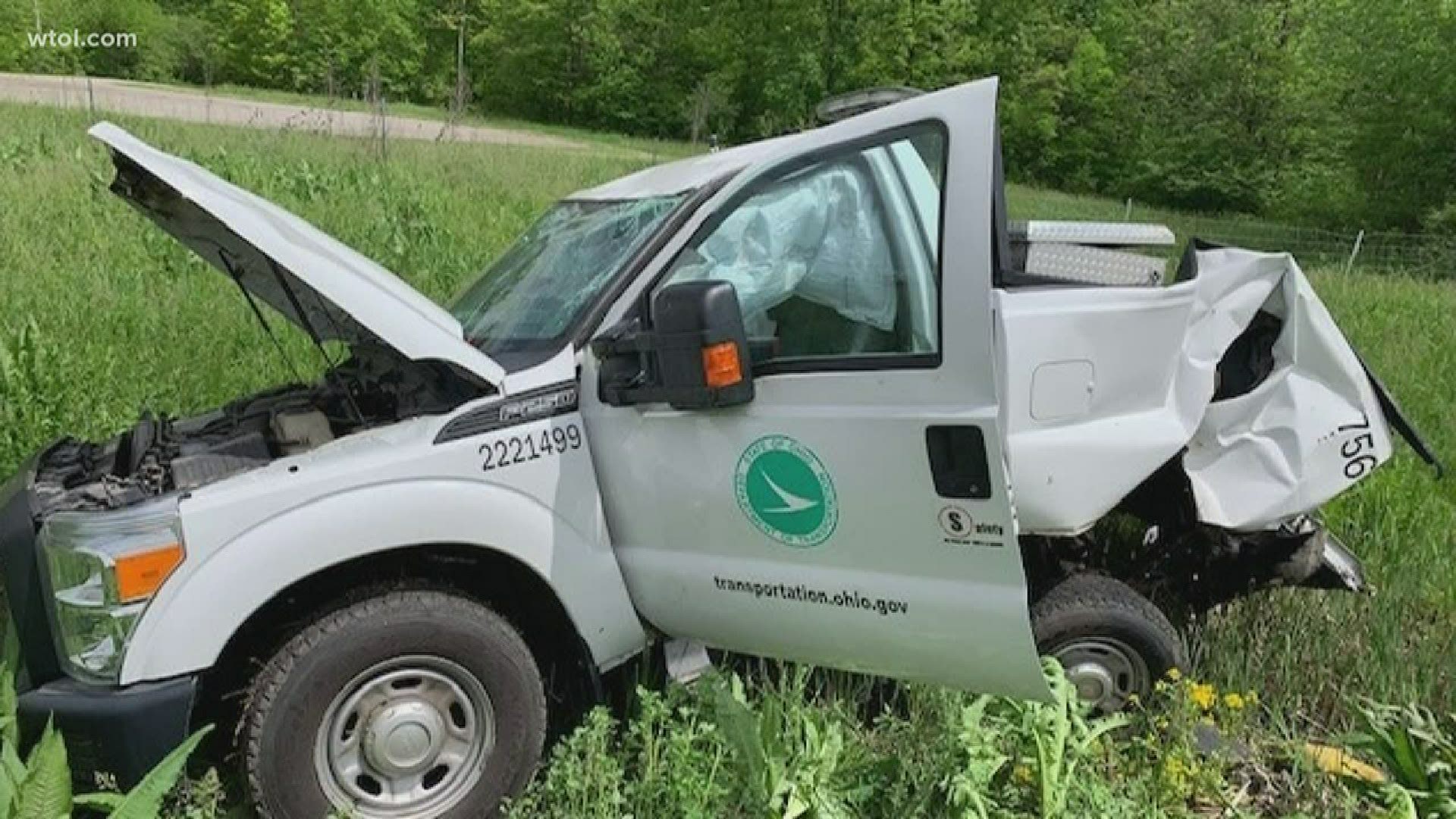OHIO, USA — As the state slowly reopens, leaders with the Ohio Department of Transportation (ODOT) are pleading with drivers to slow down in work zones.
Even during the state's stay-at-home order, when fewer cars were out on the road, their road crews weren't any safer.
An ODOT dump truck's dash camera captured the moment a car side-swiped a truck on I-76 near Akron last week. Road crew members were standing just a few feet away.
On Wednesday, a semi truck smashed into an ODOT arrow board and pickup truck on US-30 in Crawford County in North Central Ohio. A worker inside the pickup was taken to the hospital and is expected to be OK.


Unfortunately, these preventable crashes aren't anything new.
"The last several years, we've seen around 200 crew strikes each year. That includes people, equipment, vehicles; anything that ODOT has out in the work zone that's hit," ODOT press secretary Matt Bruning said.
Since Valentines Day of this year, 12 active work zones with crew members present have been hit state-wide. Four of those occurred after the stay-at-home order was enacted back in March.
"Even with fewer people on the roads, we were still getting hit. That's just unacceptable," Bruning said.
High speeds and distracted driving may to be blame.
"(With) any number of motorists on the roadway, we can still have these same crashes. It's just important for motorists to pay attention and slow down in work zones. If you can't move over then don't drive distracted and pay attention," ODOT District 3 spokesperson Crystal Neelon said.
Ohio’s "Move Over" law requires motorists to shift over one lane — or slow down if changing lanes is not possible — when passing any vehicle with flashing lights on the side of a road. The law's purpose is to protect everyone who works on our roads and everyone who travels on them.
The "Move Over" law applies to all stationary vehicles with flashing lights, including law enforcement officers and emergency responders as well as road construction, maintenance and utility crews. The law applies to all roadways and highways in the state, and fines are doubled for failing to comply with it.

